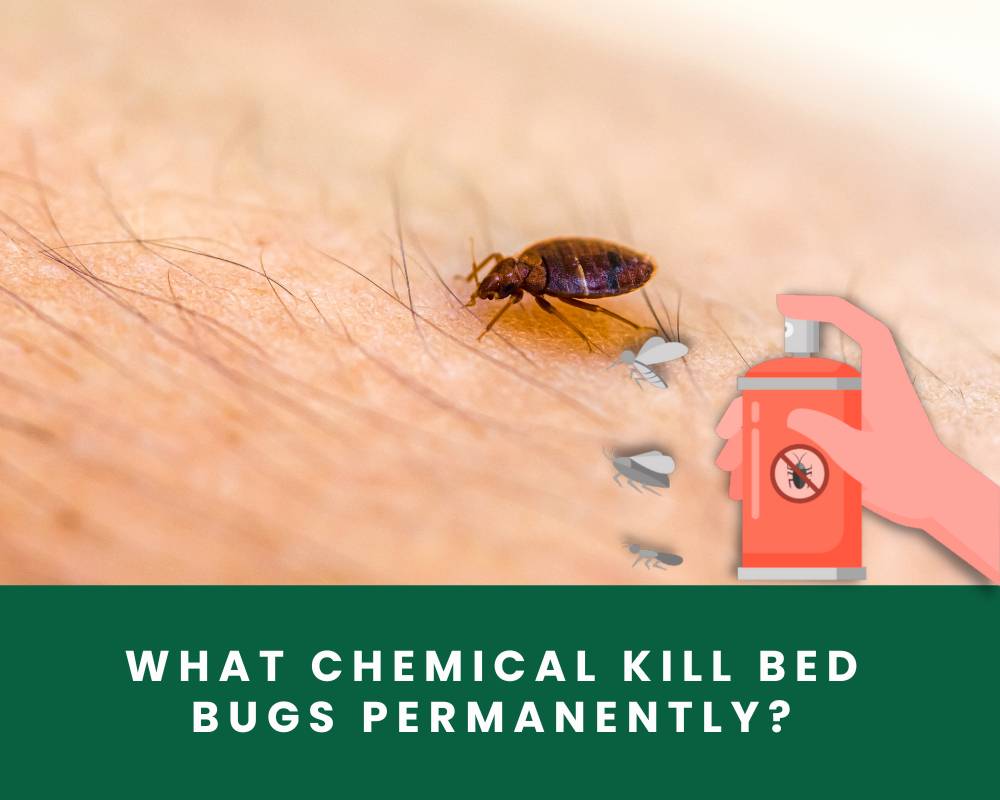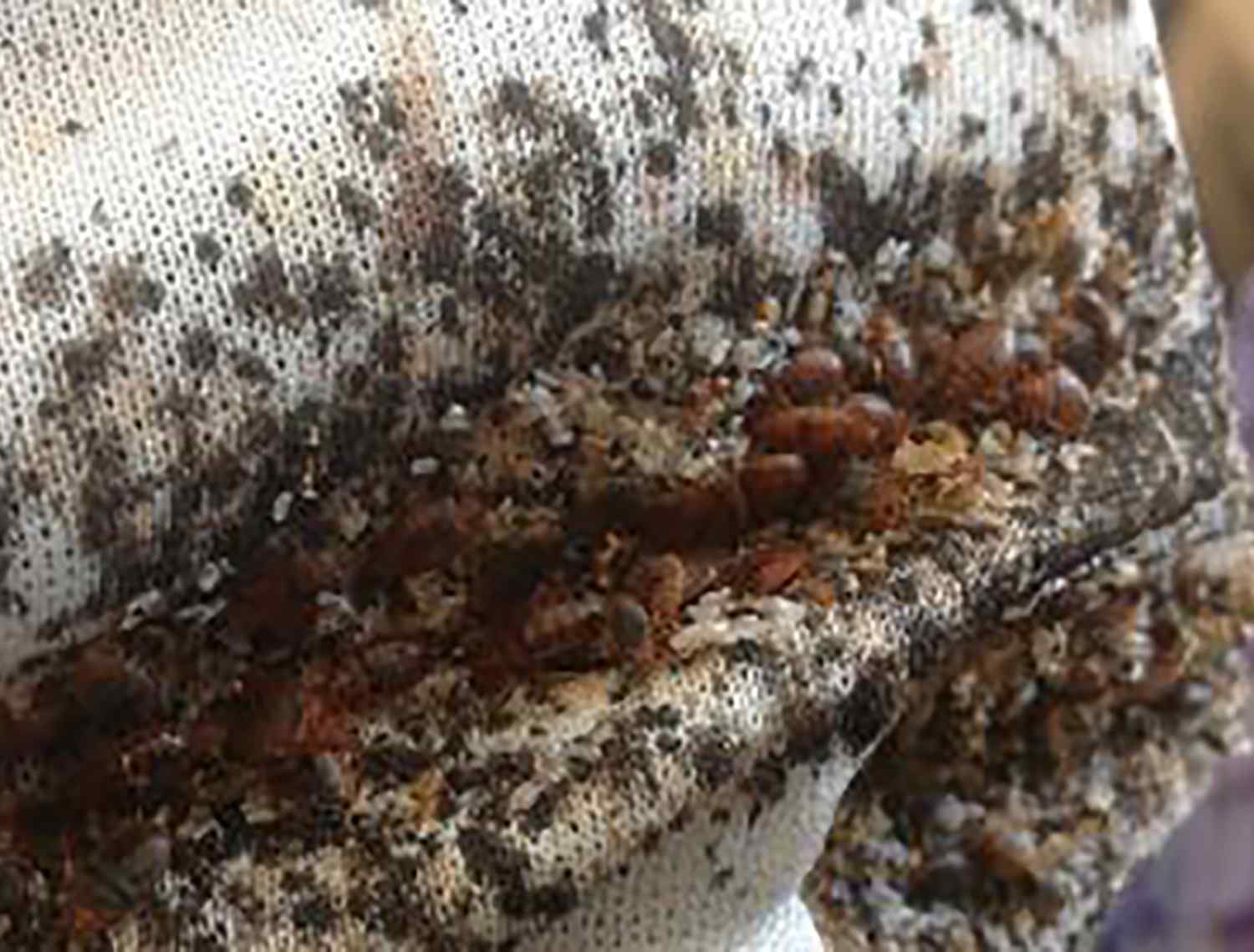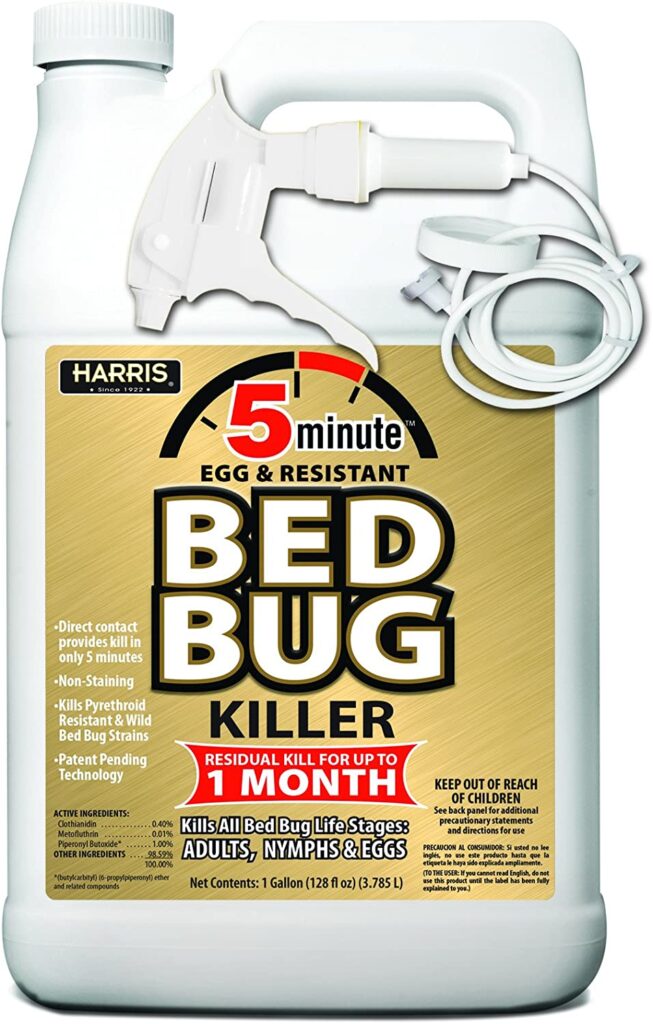If you've ever had a bed bug infestation, you know just how frustrating and difficult they can be to get rid of. These tiny pests can hide in the tiniest crevices and are notoriously difficult to eliminate. But fear not, there are ways to treat bed bugs, and one of the most common methods is through chemical treatment. Bed bugs are small, flat, reddish-brown insects that feed on the blood of humans and animals. They are most commonly found in beds, hence their name, but can also hide in furniture, clothing, and other household items. They are often brought into homes through luggage, clothing, and secondhand furniture. And once they infest a home, they can quickly spread to other areas, making it a nightmare for homeowners to get rid of them.Chemical Treatment for Bed Bugs: What You Need to Know
The first step in treating bed bugs is to identify the source of the infestation. In most cases, it will be the mattress. Bed bugs are attracted to the warmth and carbon dioxide that humans emit while sleeping, making mattresses the perfect hiding spot for them. Inspect your mattress thoroughly for any signs of bed bugs, such as small brown or red spots, shed skins, or live bugs. If you do find evidence of bed bugs on your mattress, the next step is to treat them. One of the most effective methods is through chemical treatment. There are several different types of chemicals that can be used to kill bed bugs, including pyrethrins, pyrethroids, desiccants, and neonicotinoids. These chemicals can be found in various forms, such as sprays, dusts, and foggers.How to Get Rid of Bed Bugs in a Mattress
While mattresses are a common hiding spot for bed bugs, they can also live in other areas of your home, such as furniture, baseboards, and even behind wallpaper. They can survive for several months without feeding, making it difficult to completely get rid of them. This is why it's important to treat not just your mattress, but your entire home if you have a bed bug infestation. Chemical treatment for bed bugs on a mattress involves thoroughly spraying or applying the chemical to all surfaces of the mattress, including seams and crevices. It's important to follow the instructions on the product carefully and use protective gear, as some of these chemicals can be harmful if not used properly.Can Bed Bugs Live in Your Mattress?
If you're not comfortable using chemicals to treat bed bugs, there are also non-chemical methods available. These include heat treatment, vacuuming, and steam cleaning. These methods can be just as effective as chemical treatments, but may require multiple rounds of treatment to completely get rid of the bed bugs. Heat treatment involves using high temperatures to kill bed bugs and their eggs. This can be done by using a special heating unit or by placing infested items in a hot dryer for at least 30 minutes. Vacuuming and steam cleaning can also help to remove bed bugs and their eggs from the surface of your mattress, but make sure to dispose of the vacuum bag or steam cleaner contents immediately to prevent the bed bugs from spreading.Chemical-Free Ways to Get Rid of Bed Bugs
If you've decided to use chemical treatment to get rid of bed bugs on your mattress, there are a few steps you should follow to ensure it is done effectively:How to Treat Bed Bugs on a Mattress
When it comes to choosing a chemical treatment for bed bugs, it's important to choose one that is specifically labeled for bed bug control. Some of the most effective chemicals for treating bed bugs on a mattress include:Best Chemicals for Bed Bug Treatment
The best way to prevent a bed bug infestation from occurring in your mattress is to be proactive in your prevention methods. Be cautious when traveling, inspect secondhand furniture before bringing it into your home, and regularly vacuum and clean your mattress and bedding. You can also use mattress encasements to help prevent bed bugs from infesting your mattress. Bed bug mattress encasements are specially designed covers that completely encase your mattress, making it difficult for bed bugs to enter or escape. These encasements are also usually made with materials that are impenetrable by bed bugs, making it easier to spot and eliminate any potential infestations.How to Prevent Bed Bugs in Your Mattress
When it comes to treating bed bugs on a mattress, both chemical and non-chemical methods can be effective. Chemical treatments may provide quicker results, but non-chemical methods may be safer and more environmentally friendly. It ultimately depends on your personal preferences and the severity of the infestation when deciding which method to use. If you have children or pets in the home, it may be best to opt for non-chemical methods to avoid any potential harm.Chemical vs. Non-Chemical Bed Bug Treatment
If you're unsure whether or not your mattress has bed bugs, there are a few signs to look out for:How to Tell if Your Mattress Has Bed Bugs
If you want to prevent bed bugs from infesting your mattress without the use of chemicals, you can also opt for a chemical-free bed bug mattress encasement. These encasements are made with materials that are impenetrable by bed bugs and are often hypoallergenic, making them a safe and effective way to protect your mattress.Chemical-Free Bed Bug Mattress Encasements
The Importance of Chemically Treated Mattresses in Preventing Bed Bugs

Why Mattresses are Vulnerable to Bed Bugs
 When it comes to bed bugs, mattresses are often the prime target. These tiny insects can easily hide and thrive in the nooks and crannies of a mattress, making it the perfect breeding ground. Additionally, bed bugs are attracted to the carbon dioxide and warmth emitted by our bodies as we sleep, making our mattresses an ideal hiding spot.
When it comes to bed bugs, mattresses are often the prime target. These tiny insects can easily hide and thrive in the nooks and crannies of a mattress, making it the perfect breeding ground. Additionally, bed bugs are attracted to the carbon dioxide and warmth emitted by our bodies as we sleep, making our mattresses an ideal hiding spot.
The Dangers of Bed Bugs in Our Mattresses
 Bed bugs are not just a nuisance, they can also pose serious health risks. Their bites can cause skin irritation and allergic reactions, and in rare cases, they can even transmit diseases. Not to mention, the psychological toll of dealing with a bed bug infestation can be immense, causing anxiety and sleep disturbances.
Bed bugs are not just a nuisance, they can also pose serious health risks. Their bites can cause skin irritation and allergic reactions, and in rare cases, they can even transmit diseases. Not to mention, the psychological toll of dealing with a bed bug infestation can be immense, causing anxiety and sleep disturbances.
The Solution: Chemically Treated Mattresses
 The good news is that mattresses can be chemically treated to prevent bed bugs from infesting them. This involves using insecticides or other chemicals that are specifically designed to target bed bugs. These treatments can be applied to both new and existing mattresses, providing a layer of protection against these pesky insects.
The good news is that mattresses can be chemically treated to prevent bed bugs from infesting them. This involves using insecticides or other chemicals that are specifically designed to target bed bugs. These treatments can be applied to both new and existing mattresses, providing a layer of protection against these pesky insects.
Benefits of Chemically Treated Mattresses
 Aside from preventing bed bugs, chemically treated mattresses offer other benefits as well. They can also protect against other pests, such as dust mites and fleas, which can also cause health problems. Additionally, these treatments can help prolong the lifespan of your mattress by preventing the infestation of any pests that can damage the material.
Aside from preventing bed bugs, chemically treated mattresses offer other benefits as well. They can also protect against other pests, such as dust mites and fleas, which can also cause health problems. Additionally, these treatments can help prolong the lifespan of your mattress by preventing the infestation of any pests that can damage the material.
How to Get Your Mattress Chemically Treated
 If you are purchasing a new mattress, make sure to ask the retailer if they offer a chemically treated option. If you already have a mattress, you can contact a pest control professional who can properly treat your mattress for bed bugs. It is important to note that these treatments should only be done by trained professionals to ensure safety and effectiveness.
If you are purchasing a new mattress, make sure to ask the retailer if they offer a chemically treated option. If you already have a mattress, you can contact a pest control professional who can properly treat your mattress for bed bugs. It is important to note that these treatments should only be done by trained professionals to ensure safety and effectiveness.
Conclusion
 In conclusion, chemically treated mattresses are an effective solution for preventing bed bugs and other pests from infesting your sleeping space. Not only do they offer protection against potential health risks, but they also help to prolong the lifespan of your mattress. So when it comes to choosing a mattress, don't overlook the importance of a chemical treatment option.
In conclusion, chemically treated mattresses are an effective solution for preventing bed bugs and other pests from infesting your sleeping space. Not only do they offer protection against potential health risks, but they also help to prolong the lifespan of your mattress. So when it comes to choosing a mattress, don't overlook the importance of a chemical treatment option.



















































:max_bytes(150000):strip_icc()/bed-bug-bites-overview-2633482_v2-f8bfc57491af4e7a93307ec27a0d9652.png)
























































